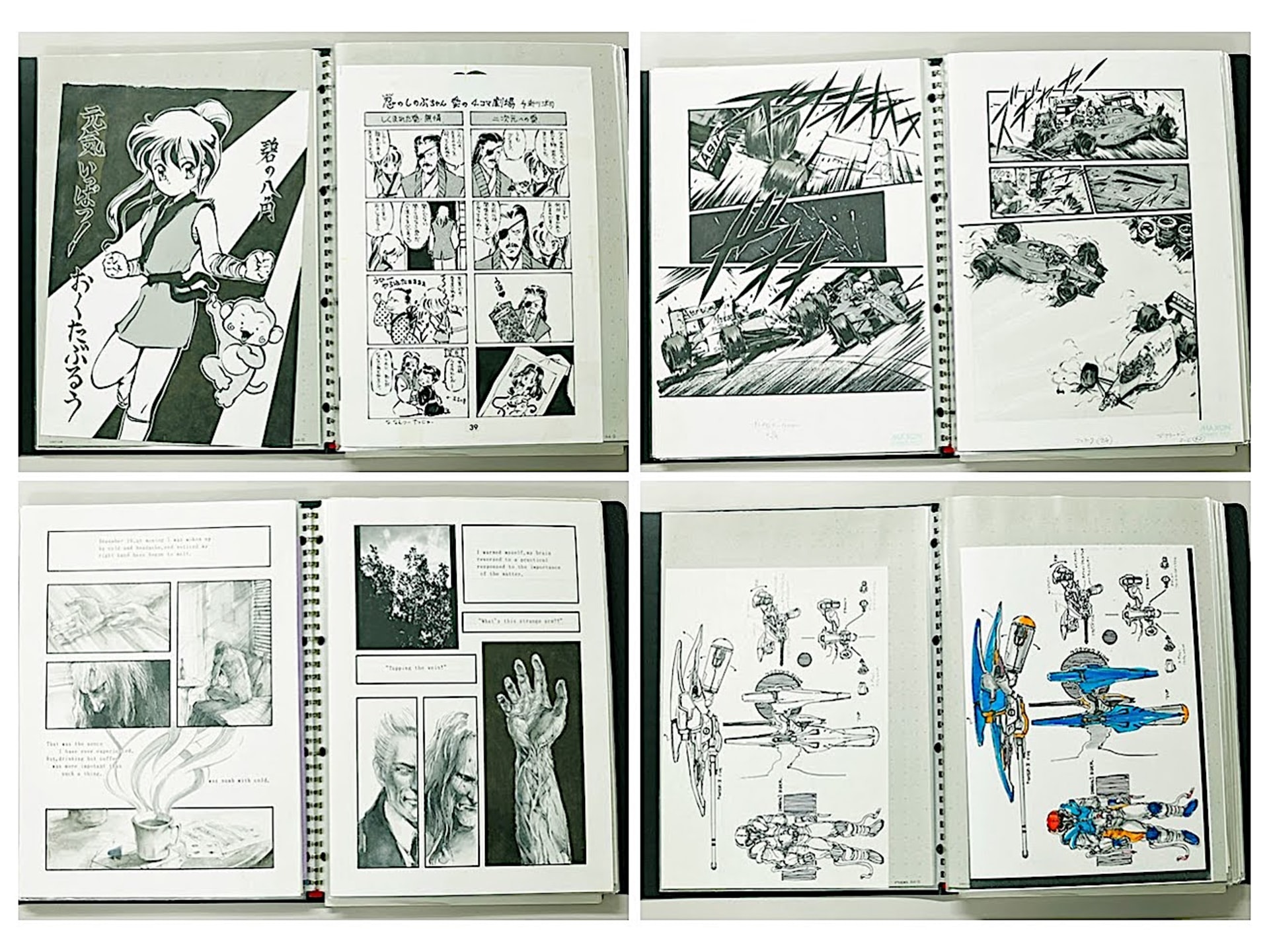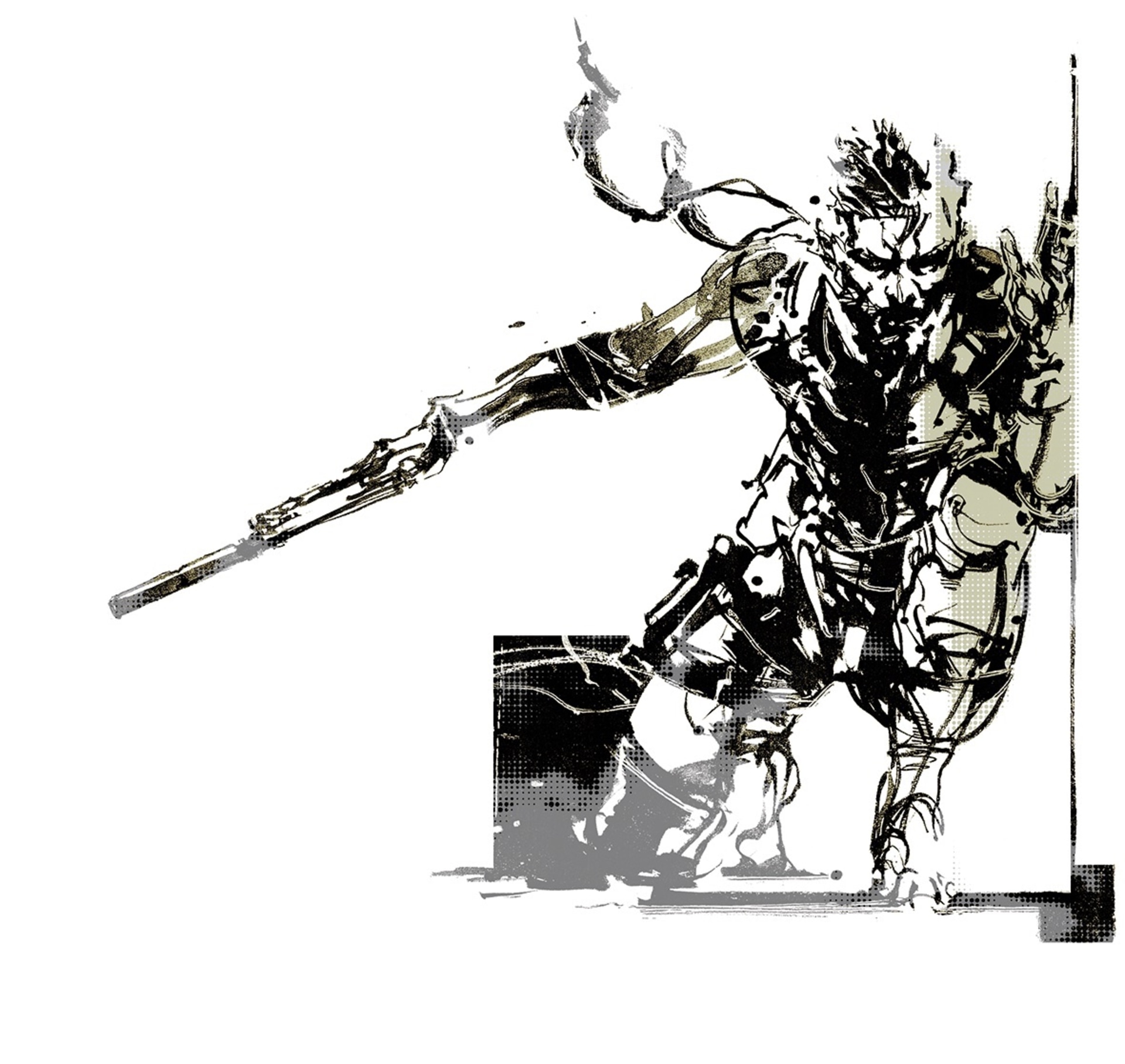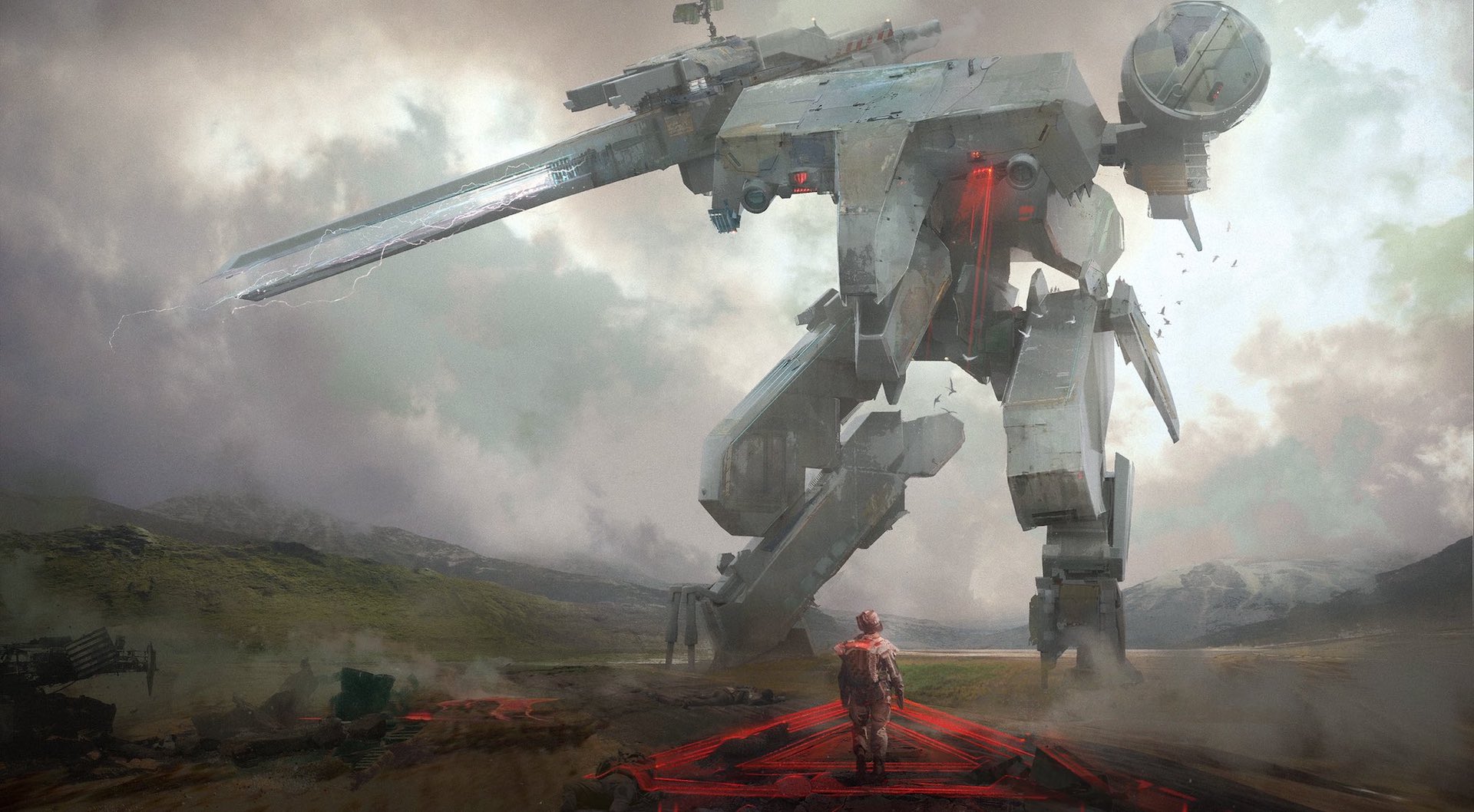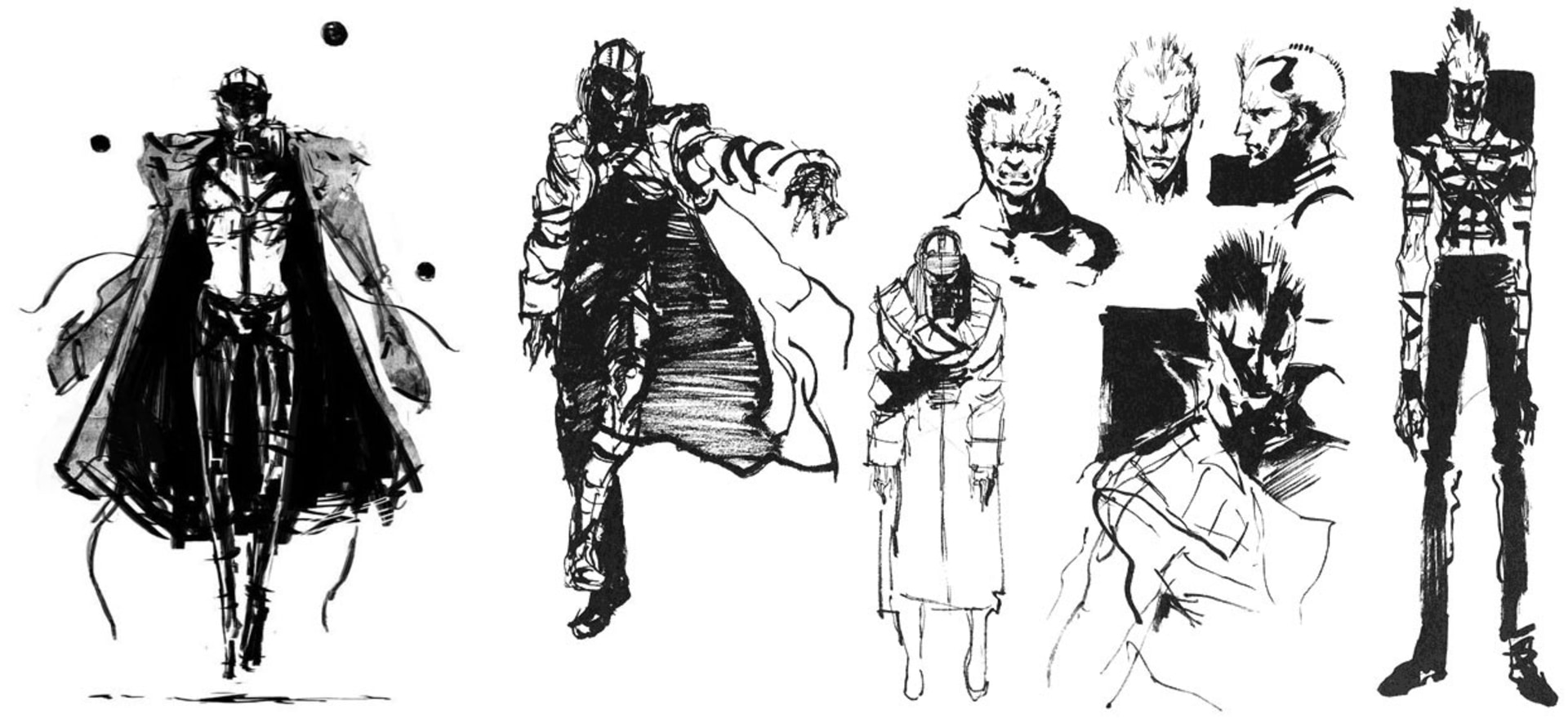In an industry where a lot of marketing art is outsourced to specialized 3D companies, and can sometimes be somewhat generic or lacking an "author's signature", Shinkawa's drawings are a breath of fresh air. Seldom is one of the principal visual designers on a game also the person that provides the public-facing art. Consequently, his work strikes a chord with video game art collectors. Shinkawa's work is highly sought after for art prints and art books.

article
Artist spotlight: Yoji Shinkawa
Meet the "instant gold star" behind Metal Gear Solid and Death Stranding.
Arjan Terpstra
17 Feb 2022 ⋅ 9 min read
Few artists working in video games are as renowned as Yoji Shinkawa. As Art Director he was responsible for the visual identity of Metal Gear Solid and Death Stranding, aiding creative director and longtime creative partner Hideo Kojima in establishing these seminal titles. Kojima's games are unmistakingly connected to Shinkawa's highly identifiable sumi-e style "doodles" and designs.
In an industry where a lot of marketing art is outsourced to specialized 3D companies, and can sometimes be somewhat generic or lacking an "author's signature", Shinkawa's drawings are a breath of fresh air. Seldom is one of the principal visual designers on a game also the person that provides the public-facing art. Consequently, his work strikes a chord with video game art collectors. Shinkawa's work is highly sought after for art prints and art books.
In an industry where a lot of marketing art is outsourced to specialized 3D companies, and can sometimes be somewhat generic or lacking an "author's signature", Shinkawa's drawings are a breath of fresh air. Seldom is one of the principal visual designers on a game also the person that provides the public-facing art. Consequently, his work strikes a chord with video game art collectors. Shinkawa's work is highly sought after for art prints and art books.
Who is artist Yoji Shinkawa?
Yoji Shinkawa was born in Hiroshima, December 25th 1971. In 1994 he graduated from Kyoto Seika University, a private art university renowned for its art, design, and manga faculties, where Shinkawa majored in "Western painting." Here, he specialized in oil painting, but did not restrict himself to learning one specific technique or skill: he was highly versatile in the arts of drawing and sculpting, honing skills at university that would prove very useful later on.
From a career perspective, Shinkawa first envisioned being a manga artist, but, fearing his love for painting had given him the "wrong skill set," decided against that. Instead, he applied for a position at Konami in Tokyo, then and now one of the leading entertainment businesses in Japan. At the time, Konami saw opportunities in the new generation of home consoles (the Sega Saturn and the PlayStation both launched in 1994), leading to large investments in studios and games.
In an interview, Shinkawa mentions his love for games as the main reason to apply. "Back when I was young all the game characters were simple, like manga characters. So I sought to create bigger, realer, more hard-boiled characters and environments for the game industry. That's why I applied."
A rare find
Judging from the portfolio that carried him through his interviews at Konami in 1994, he was a versatile artist well before his work in games began. Dynamic manga pages dominated by strong, angular linework proved Shinkawa could easily have made a living as a manga artist, while his "mecha" designs showed his penchant for designing impressive vehicles.
Memorable is the artistry involved in these portfolio pages: although Shinkawa's youthful inexperience shines through some of the art, the collection as a whole convinced Konami's creative director Hideo Kojima to hire Shinkawa straight out of school. Kojima, in a Japanese PlayStation magazine interview in 1998:
"Shinkawa … was a rare find, the kind you only come across once every 10 years. Before our hiring interviews, we make a point of reviewing the potential candidates’ portfolios. We’re looking through about 100 people’s work, and in the process you do see things that really jump out at you as amazing."
Kojima again: "We also grade each portfolio with a rating of S, A, B, C etc. (the S-rank is from a Japanese academic ranking system used to describe a level superlative to grades such as A, B, etc—AT) I’ve probably looked at 10,000 candidates myself at this point, and I’ve never seen anyone who I immediately wanted to give an S until Shinkawa. He’s the only one, and it was an instant “gold star”. He had 4 different styles on display then. When I first saw his work he had drawings in an American comic style, a French comic style… and these didn’t at all seem like they’d been drawn by the same person. One folder, four distinct styles."
Shinkawa was first assigned to work with Kojima on a game called Policenauts, mostly working on debugging the game, but also engaging in creative conversations with the game director. Following a short Policenauts stint, Kojima asked Shinkawa to work on a new game that was in the pre-production phase. Metal Gear Solid would be the 3D follow-up to Konami's Metal Gear games, popular 2D side-scrolling games that had launched Hideo Kojima as a notable game designer and director.
"Shinkawa … was a rare find, the kind you only come across once every 10 years. Before our hiring interviews, we make a point of reviewing the potential candidates’ portfolios. We’re looking through about 100 people’s work, and in the process you do see things that really jump out at you as amazing."
Kojima again: "We also grade each portfolio with a rating of S, A, B, C etc. (the S-rank is from a Japanese academic ranking system used to describe a level superlative to grades such as A, B, etc—AT) I’ve probably looked at 10,000 candidates myself at this point, and I’ve never seen anyone who I immediately wanted to give an S until Shinkawa. He’s the only one, and it was an instant “gold star”. He had 4 different styles on display then. When I first saw his work he had drawings in an American comic style, a French comic style… and these didn’t at all seem like they’d been drawn by the same person. One folder, four distinct styles."
Metal Gear REX
Shinkawa was first assigned to work with Kojima on a game called Policenauts, mostly working on debugging the game, but also engaging in creative conversations with the game director. Following a short Policenauts stint, Kojima asked Shinkawa to work on a new game that was in the pre-production phase. Metal Gear Solid would be the 3D follow-up to Konami's Metal Gear games, popular 2D side-scrolling games that had launched Hideo Kojima as a notable game designer and director.
At the heart of Kojima's new game, that would take advantage of the 3D rendering capabilities of the new PlayStation console, was the Metal Gear REX, a walking tank. It fell to Shinkawa to design the 3D model. First, the creative parameters were discussed: in movement, the REX should have a dinosaur-like quality (the Tyrannosaurus Rex served as inspiration for its name and shape), and as a robot it should not follow the human form or be "too much from outer space"—basically excluding the whole canon of Japanese mecha designs as reference material.
With sketch designs approved, Shinkawa did something that many Western designers only dream of: he went home and spent the next six weeks building a large, physical 3D model in his apartment. Modeling was a widespread practice in Japanese studios, a trusted technique to imagine key game elements before building a computer version. Even Sonic the Hedgehog got the clay treatment, when Team Sonic made a physical model for Sonic Adventures (1998), to aid the team in understanding how a hedgehog looked when the camera was positioned behind him. Every once in a while, Kojima would visit Shinkawa's home: "the floor of his room was littered with junk and scrap, it covered everything, there was nowhere to step!"
A dinosaur jaw doubling as cockpit
With sketch designs approved, Shinkawa did something that many Western designers only dream of: he went home and spent the next six weeks building a large, physical 3D model in his apartment. Modeling was a widespread practice in Japanese studios, a trusted technique to imagine key game elements before building a computer version. Even Sonic the Hedgehog got the clay treatment, when Team Sonic made a physical model for Sonic Adventures (1998), to aid the team in understanding how a hedgehog looked when the camera was positioned behind him. Every once in a while, Kojima would visit Shinkawa's home: "the floor of his room was littered with junk and scrap, it covered everything, there was nowhere to step!"
Shinkawa's Metal Gear REX model showcased at a MGS exhibition. To the right are photos of the model, covered in smoke, to suggest what the model could look like in-game. Kojima remembered blowing cigarette smoke at the model, in lieu of other options. Shinkawa declined to help him with the task, as he hated tobacco smoke.
The design was a triumph of plaster crafting—sculpting clay on a wireframe model apparently came as easy to Shinkawa as applying paint on canvas. Impressively looking, it worked miracles for the game once the physical model was transferred to an in-game 3D model. The REX loomed large on his two long legs, behaved like a wounded T-Rex once shot at, and had a "dinosaur jaw" that cleverly doubled as a cockpit for the pilot.
Psycho Mantis
Metal Gear Solid may have been Shinkawa's maiden voyage as a videogame designer, but making game art came naturally, he said in the PlayStation blog interview. "You just have to think realistically, and create things that work for the game," he explained deadpan, hinting at the utilitarian, practical use of art assets in games. He went on to describe his work method. "My approach differs between projects as some have clearly defined requests, while others allow me to generate ideas freely. However, a common first step is to draw many doodle-like, rough sketches to hone in on the image I am going for."
Kojima expanded on this in a 2020 Famitsu Weekly interview: "Shin-san is extremely fast at drawing silhouettes. Once he grasps the essence of the image with his brush he immediately determines which direction the drawing will take. He will add a clear outline to his original energetic brushstrokes, fill in details, and then consider how the character will look in CG." The work method, based both on Kojima's strong aesthetic and conceptual sense, and Shinkawa's ability to quickly transfer ideas onto paper, yielded some of the most iconic game characters in video games, such as Solid Snake, Big Boss, Psycho Mantis, and many, many more.
Key to understanding the strength of Shinkawa's approach is his proficiency as a technical artist. The word "doodle" doesn't do justice to Shinkawa's incredible mastery of human anatomy, composition, facial expressions, et cetera. This explains the "energetic brushstrokes" Kojima talks about: the human figure has no mysteries for him, as the artist is liberated from having to think about anatomic details, or even the management of his strokes.
Stroke management
Key to understanding the strength of Shinkawa's approach is his proficiency as a technical artist. The word "doodle" doesn't do justice to Shinkawa's incredible mastery of human anatomy, composition, facial expressions, et cetera. This explains the "energetic brushstrokes" Kojima talks about: the human figure has no mysteries for him, as the artist is liberated from having to think about anatomic details, or even the management of his strokes.
His approach belies his background as a classical painter. Shinkawa favors felt-tip and brushlike pens (Japanese calligraphy pens, for instance), over hard-tip pens. This explains the rugged outlines that define his doodles. "The thing about brushwork is, the lines aren't ever really "perfect," Shinkawa said in the PlayStation blog interview. "It's different from pencil and pen in that way. When you paint with brushes, you always get some degree of unexpected lines from what you want to draw. But that's also part of what makes it cool."
The combined result of his artistic training and choice of tools, is that his pen flows intuitively, the paper capturing bold characters in strong poses that seem to come from nowhere—Shinkawa's doodles show his absolute mastery of weight distribution in a human body, keeping character art from "floating," as the workings of gravity are always evident.
And so it is no mystery why Shinkawa's "doodles' made their way to the cover art of the Metal Gear Solid games. Shinkawa's iconic and artistic drawing style, its floating black brush lines capturing bigger-than-life characters like Solid Snake, would come to redefine "box art", in the same way Yoshitaka Amano's cover work for the FINAL FANTASY games would.
The work of both artists stood out, in terms of style, but also in terms of substance. Amano by giving us dreamy sketches of FINAL FANTASY's heroes, using pens and watercolors to suggest the colorful fantasy world of the game. And Shinkawa by giving us bold, loose drawings of Metal Gear's iconic heroes: brooding characters suggesting to us that life inside the game world is full of suspense and tension.
Weight distribution
The combined result of his artistic training and choice of tools, is that his pen flows intuitively, the paper capturing bold characters in strong poses that seem to come from nowhere—Shinkawa's doodles show his absolute mastery of weight distribution in a human body, keeping character art from "floating," as the workings of gravity are always evident.
And so it is no mystery why Shinkawa's "doodles' made their way to the cover art of the Metal Gear Solid games. Shinkawa's iconic and artistic drawing style, its floating black brush lines capturing bigger-than-life characters like Solid Snake, would come to redefine "box art", in the same way Yoshitaka Amano's cover work for the FINAL FANTASY games would.
The work of both artists stood out, in terms of style, but also in terms of substance. Amano by giving us dreamy sketches of FINAL FANTASY's heroes, using pens and watercolors to suggest the colorful fantasy world of the game. And Shinkawa by giving us bold, loose drawings of Metal Gear's iconic heroes: brooding characters suggesting to us that life inside the game world is full of suspense and tension.
The Shinkawa style
The strength of the box art lies in Shinkawa's less-is-more approach to his portraits of Solid Snake, the Twin Snakes, or other characters from the games. Shinkawa took a minimalist approach, and executed his vision in a confident drawing style, the sparse and "flowy" black lines not only suggesting iconic characters of the games, but also their personalities.
The strength of the "Shinkawa style" is there for anyone to see—his art books with MGS character doodles are very popular. In an industry where artists work in groups by default, and where you seldom know who is responsible for what, Shinkawa stands out as an artistic "auteur," a true artist with a distinct, exciting, and highly recognizable style.
Or, you know, four.









